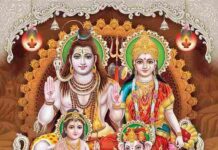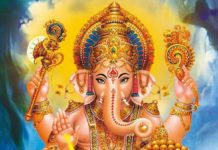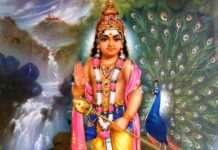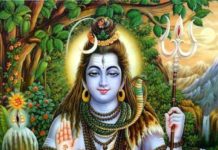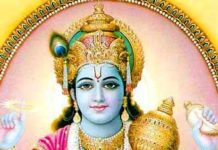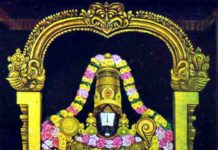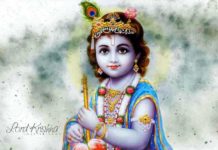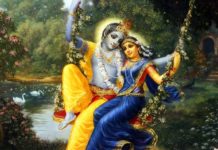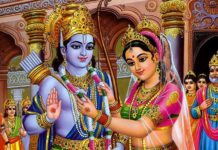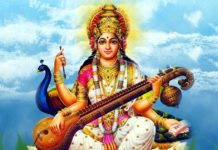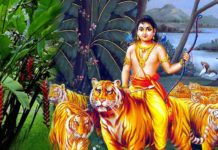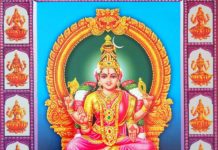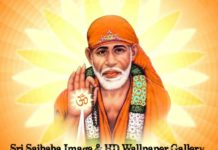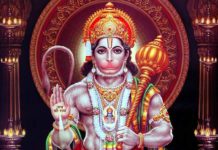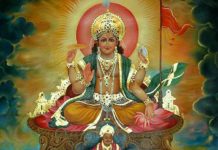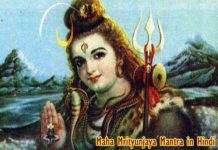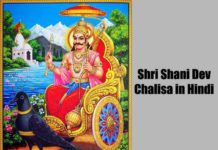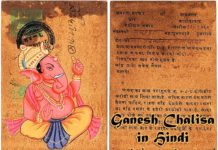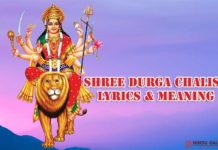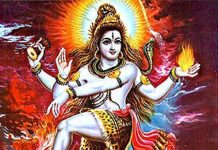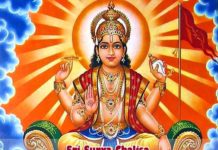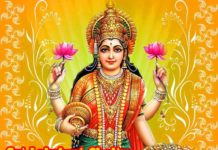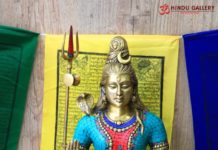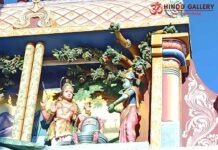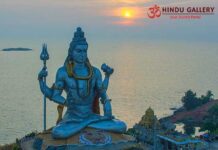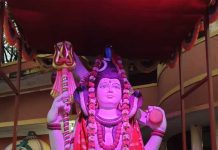Sri Nataraja Mandir is ascribed to Sri Nataraja Swamy, the dancing Bhagwan Shiva. The temple is very ancient and is believed to be in existence since the time of Chola Kings. It is situated at a small town named Chidambaram in Tamil Nadu. Chidambaram lies in between the northern side of river Kollidam and the southern side of the river Manimuktha.
Chidambaram is the combination of two words Chid (mind) and Ambaram (open space). It is the place of limitless knowledge and hence called as Gnanaakaasam. It is also called as Ponnambalam which means golden arena.
Chidambaram is also called as Thillai denoting the presence of Thillai trees in the area. It is also called as Perumpattra Puliyur as the Sage Vyagra Padha (tiger legged) had done penance and puja here. Chidambaram is also hailed as Vyagra Puram, Booloka Kailasam and Pundarika Puram.
The temple is also ascribed to Bharatha Natyam, one of the classical Indian dance forms. It is believed that Bhagwan Shiv Himself is the pioneer in the dance tradition. The temple has five precincts ascribed to the holy dance of Bhagwan Shiva. They are Chittrambalam, Ponnambalam, Paerambalam, Nruthya Sabha and Raja Sabha.
Chidambaram Nataraja Swamy temple is one of the Pancha bootha Sthal temples. This temple is ascribed to the Sky. The temple is well noted for having the Sannidhi for Bhagwan Shiv, Bhagwan Vishnu and Sri Brahma. The temple has attained its holy notoriety on account of the Murthy, Sthalam and Thertham.

Here Murthy denotes the holy appearance of Sri Nataraja Murthy in dancing form. He is in the format of the Mantra OM. The Murthy denotes the five divine duties of creation, protection, destruction, extinction and blessing.
Legend
There are several legends associated with the Chidambaram Temple. A few of them are described here.
Madhyantha
Sage Vasishta had a nephew named Madhyantha. He had taken his nephew as his disciple and taught the Vedas and Shastras to him. He also blessed him to attain self-actualization and wisdom. When Madhyantha asked his Guru about the ways to achieve athma-gnana, the Sage suggested that the disciple should go to Thillai Vanam down south and worship the self-manifested Shiv Lingam consecrated there.
As advised by Sage Vasishta, Madhyantha reached Thillai Vanam in the southern part of Bharath. He saw the swayambu Lingam who was being hailed as Thirumula Nathar. He had made a make shift cover for the Lingam and started his penance and puja there.
He used to pluck flowers from the forest for puja. When he tried to pluck them early in the morning, his sight did not help him in the dim light. When he tried to do the plucking after sun-rise, he found that most of the flowers were ruined by bees and insects for the extraction of honey. He found such flowers unfit for puja.
So, he cried to Bhagwan Shiva for help. Bhagwan spoke to him in asareeri (bodyless voice). He told him that Madhyantha would be blessed with tiger legs and sharp eyes so that he could climb the trees to pluck untouched flowers for puja.
From then on, Madhyantha was known by the name Vyagra Padha (tiger legged).
Sage Pathanjali
At Vaikuntam, Bhagwan Sri Vishnu was reclining on Sri Adhi Sesh as usual. That day, Adhi Sesh could not bear the weight of Bhagwan. He asked Sri Vishnu, “I am serving as Your bed for so long; It has always been a pleasure for me; However, today I’m feeling some heaviness; Why is that?”.
Bhagwan replied, “Hey Sesh, today I have remembered the cosmic dance of Bhagwan Shiv which I was fortunate enough to see; That memory made me happy; My happiness would have probably made me heavier’’.
Adi Sesh was intrigued and asked Bhagwan, “Prabho, can you please elaborate on the happening? I am very eager.” Sri Bhagwan obliged by informing as follows:
“There was a place named Tharuka Vanam; The place was inhabited by a group of Munis and their families. They follow the four Vedhas and six Shastras to the letter; However, they are too complacent and not even thinking of God. This made both Bhagwan Shiv and myself worried. We had decided to teach the scholars a lesson.
Bhagwan Shiv had mounted His Nandi Vahan; He took the form of a beggar; I took the form of a Mohini, a temptress; We went to Tharuka Vanam; Bhagwan Shiv had asked His Nandi to stand at a corner and watch the proceedings silently.
Shiv Murthy, in the disguise of a beggar, was asked for alms from all the Munis and their wives; Me, as Mohini was wandering here and there seeking the attention of Munis; All the young Munis came after me entrapped in my appearance; The womenfolk of the Muni group were after the handsome beggar; There was chaos everywhere and things were out of control.
The elder Rishis there were aghast at the happenings; They felt shameful. They thought that the handsome beggar is a monster usurping the womenfolk. They wanted to punish him.
They did a homam with fire chanting fierce mantras; From the homam, a monstrous tiger appeared; The tiger was sent on the beggar; The beggar had just torn the tiger and had worn the skin as His dress; This made the Rishis furious.
They again did a homam with fire chanting more fierce mantras; From the homam, a string of serpents emerged; They were also sent to the beggar as weapons; The beggar made them into the garland and worn them; The Munis were aghast;
They did another ferocious homam; This time, a huge fearsome goblet emerged; The goblet approached the beggar threateningly; The beggar simply pushed down the demon goblet and kept His foot on the back of the demon; This baffled the Rishis;
They had sent the fire itself (agni) on the beggar; He simply took it in His left had effortlessly; This time, the Munis were at the edge of their frustration; They had thrown the Vedas at the beggar hoping that they would pin Him down. But the holy beggar was too big for the Vedas; The Vedas themselves had surrendered to Him as His anklets;
The Rishis had then realized that they are up against the Almighty Himself; They felt very helplessness; Bhagwan had blessed them with an insight and in the sight, He had done an enormous cosmic dance which encompassed everything in the universe; Myself and Sri Nandi Deva were very much pleased and enchanted to see the excellent cosmic dance.
The Munis prostrated before the Bhagwan and begged Him to show them the way for salvation. Sri Shiv told them to consecrate a Shiv Linga and do regular Pujas which would bestow them with Brahma Gnana.
Since I am remembering the mesmerizing cosmic dance of Sri Shiv, I may weigh heavier with happiness”, said Sri Vishnu.
Adi Sesha was thrilled to hear about the dance. He also wanted to witness the dance of Sri Shiv. So, he asked Sri Vishnu to show him the way for it. Sri Vishnu then asked Adi Sesha to go to Kailash and do penance to get the darshan of Sri Shiv and get the boon from Him.
Adi Sesha duly went to Kailash and did penance. Bhagwan Shiv was pleased with his penance and gave darshan to him. He then requested Bhagwan Shiv to show him the cosmic dance.
Bhagwan Shiv said, “You go to Vyagra Vanam where my devotee Vyagra Padha is doing Puja and penance. You join him and do puja to Thirumula Nathar regularly. On a Thai (dhanur month) Pushya-Star Pournami-day, I will give darshan in my dancing form to you and Vyagra Padha. But you cannot go in this snake form.
Earlier, Athri Maharishi and Anasuya had received a boon from me for begetting you as their son. As ordained, you appear as a baby in their water cupping hands; They would drop you down in fear; You will then become a human baby with five snake heads; The Rishi and his pathni will raise you as their son Pathanjali. You then go to Vyagra Vanam which is also called Thillai Vanam.”
As advised by Bhagwan Shiv, Sri Patanjali got Sage Athri and Anasuya as his parents and with their permission, he went to Thillai Vanam. He saw Sri Thirumula Nathar and the Sivaganga Theertham. There he saw Sage Vyagra Padha doing penance. He had decided to wait till Vyagra Padha took the brake. On seeing each other, they had become good friends.
They were doing sincere and devout puja to Bhagwan Shiv. The day combining Pushya star and Pournami in Thai month occurred on a Thursday. Both Vyagra Padha and Pathanjali knew that Bhagwan Shiv would show His cosmic dance on that day.
They got up early in the morning and worshipped Thirumula Nathar and Umaiammai. They went to the Mandapam where they had surmised as the place of cosmic dance. Soon all Devas including Indra arrived. This was followed by the arrival of Sri Saraswathi, Sri Mahalakshmi, Sri Brahma and Sri Vishnu. Then Sri Nandi Deva came with the golden bamboo stick. He asked Vyagra Padha and Pathanjali to take front seats to witness the dance.
Then at the appropriate Muhurat moment, a bright light appeared in the mandapam. From the brightness, Bhagwan Shiv emerged in His dancing pose with all the ensembles. Then He did the cosmic dance and the entire audience were mesmerized.
He asked Vyagra Padha and Pathanjali as to what their desires were. They said that Bhagwan Shiv should be in dancing form at this place for the pleasure and betterment of His devotees. Bhagwan had granted the boon.
Upamanyu
He was the son of the Sage Vyagra Padha. During infancy, he was brought up by Sage Vasishta in his ashram. The child was fed with the milk of Kamadhenu. When the child and the mother came back to Vyagra Padha’s residence, he could not provide Kamadhenu milk to his child. The child refused the food given by his father and kept crying. Taking pity on the child, in answer to the ardent prayers of Vyagra Padha, Bhagwan Shiv had brought the milk ocean (cosmic ocean) for the child to drink.
Upamanyu became a scholar with the passage of time. As per the legend, it is believed that Bhagwan Sri Krishna had received Shiv Dheeksha from Sage Upamanyu.
Thillai Dheekshith Scholars
Along with Vyagra Padha, Pathanjali and Upamanyu, there was a group of about 3000 vedic scholars who stayed at Chidambaram and did Puja to Bhagwan Shiv.
Once, Sri Brahma was doing a Yagna at Anthar Vedhi near Himalayas in prayer to Bhagwan Shiv. However, the Yagna did not progress as none of the Deities had appeared. Sri Brahma had surmised that all the Devathas would be in Chidambaram.
He had asked Sage Narada to go to Chidambaram and bring the Devathas and the scholars. When Narada went to Chidambaram, the Devas including Lord Indra were ready to leave for Anthar Vedhi. However, the scholars refused to leave Sri Nataraja.
Narada reported this to Sri Brahma. Sri Brahma Himself had come to Chidambaram and requested the Deities, Devas and the scholars to come to Anthar Vedhi. Even then, the scholars refused. Vyagra Padha and Pathanjali said to the scholars, “Since Sri Brahma Himself is requesting, you should respect His invitation; We will do proper puja to Sri Nataraja and uphold your rituals till you return”.
Based on the promise, the scholars went to Anthar Vedhi. As they could not see Sri Nataraja, they were restless. To placate them, Bhagwan Shiv Himself appeared in His dancing form in the Yagna fire. Then only the scholars were contended and they did the Yagna as per procedure.
When the scholars returned to Chidambaram, they found that one member was missing. Bhagwan Shiv Himself told in Asareeri that He was one amongst them so far and that they need not search for the missing person.
The scholars are then come to be known as Chidambaram Dheekshith community.
Hiranya Varma
Simha Varma was the Prince of Gowda Kingdom. He was afflicted with skin decease and he had refused to take up the responsibility of ruling the Country. He had left the palace and was wandering to various places. In his journey, he had come to Thillai Vanam; He saw the Sages Vyagra Padha and Pathanjali doing Puja to Shiv Murthy and Umaiyammai.
He asked the Sages the remedy for his ailment. They told the Prince to take a holy dip in Siva Ganga Pond and do puja to Shiv Murthy. Simha Varma had taken a holy dip with prayers. Instantly, his skin ailment had vanished and his body was dazzling like gold.
The Sages told him that he had been bestowed with the blessing of Bhagwan Shiv; They also named him as Hiranya Varma because of his golden glow.
Hirnaya Varma was very much overwhelmed with the happening and he had vowed to stay there only and do puja to Deities. Meanwhile, Simha Varma’s father tracked down his son at Chidambaram.
He asked his son to return with him and take up the governance responsibility. But Hiranya Varma refused to leave. Then Pathanjali told Hiranya Varma to resume the royal post, do the governance as per moral and ethical standards, earn good wealth and then to do the construction of the proper temple at Chidambaram. Hiranya Varma had obliged and he did construct the entire temple.
Speech power
Once, a Shiv devotee from Chidambaram went to Sri Lanka and he was chanting “Ponnambalam” all the time. The Buddha King at Lanka was intrigued and he visited Chidambaram with his family and his group of scholars. The King had a daughter who was speech impaired.
He asked the Chidambaram scholars to debate with his scholars. Bhagwan Shiva ordained that Sri Manicka Vasagar would engage in the debate on behalf of Chidambaram scholars. Manicka Vasagar had prayed to Bhagwan Shiv and Goddess Saraswathi Devi for conquest in the debate.
Sri Saraswathi Devi had made the Lankan scholars dumb. They could not even open the debate. The King was aghast. He told Sri Manicka Vasagar “If you can make my daughter speak, then I will accept that Sri Nataraja is superior; otherwise, you have to accept that our cult is superior’’.
Sri Manicka Vasagar had prayed to Bhagwan Shiv and started talking to the girl. With the blessings of Sri Shiv, she was able to talk with Sri Manicka Vasagar. The King then accepted defeat. He, his family and his scholars had become the ardent devotees of Sri Nataraja since then.
Thiru Vasakam
Bhagwan Shiv had approached Sri Manicka Vasagar as a Brahmin from Pandiya Kingdom. He said that He would be his assistant. Sri Manicka Vasagar had composed the hymns of Thiru Vasakam which was written as per his dictation. Bhagwan Shiv, in the guise of his disciple had Himself written the palm script.
Bhagwan Shiv had also scripted Thiruchittrambala Kovai in the same manner.
Gopurams
There are four Gopurams in this temple. All the towers are of similar height and structure. The length is 135 feet which comprises of 90 feet of the base structure. The breadth of the base is 60 feet. The entrance is 40 feet in height.
Each of the gopurams is seven tiered. The top of the Gopurams is curved and each tower has 13 kalasams. In each entrance, there are sculptures depicting dance postures.

As the main Deity Sri Nataraj is facing South, the flag is hoisted only in the Southern Gate. However, for procession, Swami comes out of Eastern Gate only.
Immediately inside the Eastern Gate, we can see the shrine for Sri Vinayaka in the Southern end and the Shrine for Sri Subramanya in the Northern end.
At the Southern Gate, there are shrines for the primary Dwara Palaks of Sri Nataraj namely Sri Aatkondar and Sri Ayyakondar.
Each of the Gopuram has divine significance. The four Saivic Saints called as Samaya Kuravar had entered the temple through the four gates. Sri Manicka Vasagar entered through the east gate; Sri Gnana Sambandar entered through the south gate; Sri Appar entered through the west gate; and Sri Sundarar entered through the north gate. Sri Thirunavukkarasar (Appar) had done anga-pradakshina in the four roads encompassing the temple.

The compound wall encompassing all the four Gopurams is called Sri Veerappa Nayakar Madhil as it was built by Sri Veerapa Nayak, the King. The wall is 30 feet height.
Deities
In this temple, Bhagwan Shiva blesses in two manifestations. The ancient manifestation is Sri Moolattaneshwarar in the form of Shiv Ling. It is believed that all the effects of all the Shiv Lings culminate in this Shiv Ling at night time. It is also believed that the effects of all the Shiv Lings emanate from this Shiv Ling. Sri Parvathi Devi is named as Sri Umaiammaiyar.
The other manifestation of Sri Bhagwan Shiv is Sri Nataraja, who is also called as Sri Saba Nayaka. His other names are Sri Kootha Peruman, Sri Vidangar, Sri Meru Vidangar and Sri Dakshina Meru Vidangar. Vidangar means “the most handsome guy”. Chidambaram Sthal is also referred to as Meru / Dakshina Meru. As per the stone inscriptions, Sri Nataraja is also referred to as Sri Thiruchittrambala Mudayar, Sri Thillai Nayaka Thambiran, Sri Ananda Thandava Perumal and Sri Ponnambala Koothar.

His consort Sri Parvathi Devi is called as Sri Sivakama Sundari. She stands to the left side of Sri Nataraja. There is also a separate sanctum for Her in the third precinct of the temple to the western side of Sri Siva Ganga Theertham.
Chidambara Rahasya
As a Pancha Bootha Sthal, Chidambaram is attributed to the sky. In the sanctum of Sri Nataraja, there is a small curtained enclosure to His right side. There, a golden bilva garland is hung. When Aarti is shown to Sri Nataraja, it is also shown to the bilva mala on the belief that He resides there in Akasa (formless) form. The screen is sided only during Aarti.

Outer Precinct
The outer precinct has several shrines. There is a dedicated Shrine for Sri Dakshina Murthy.

Sri Mukkurini Vinayakar
In the South-West corner of the temple, there is a separate Shrine for Bhagwan Ganesh. He is called as Sri Mukkuruni Vinyakar. He is facing east and His height is approximately 8 feet. It is sincerely believed that He fulfills the desires and wishes of His ardent devotees.
The practice of breaking either 108 or 1008 coconuts at the entrance of the Shrine is resorted to by the devotees whose prayers are answered.

Sri Karpaka Vinayakar
Next to West Gopuram, we can see the shrine of Sri Karpaka Vinayakar. He is the Sthala Vinayaka of this temple. Here Sri Vinayaka is in the dancing form and hence is also called as Sri Narthana Vinayaka. As per the legend, He had given darshan to Sage Durvasa in this form.
Sri Subramanya
Inside the west Gopuram, in the northern side, there is a shrine for Sri Subramanya. He is called as Sri Bala Subramanya and He is facing east. Skanda Sashti and Sura Samharam festivals are grandly celebrated in this Shrine.

If we proceed in the northern side of the west gate, we reach the shrine for Sri Madurai Soma Sundarar. To the north of this, there is a 100 pillar mandapam. At the front of the mandapam, there is another Vinayaka Shrine called Ottraikkal Vinayakar Shrine.
Sri Sivaganga Theertham is opposite this Vinayka Shrine. On the way to Sri Sivakami Shrine, we can arrive at the place near the temple tank from where we can see all the four Gopurams together.

Sri Sivakama Sundari Sanctum
This Shrine is in the form of a temple near the Northern Gopuram. The specialty of the Shrine is that there is a dedicated sanctum for Chitra Gupta in this temple.
This temple has separate Dwajasthamba and the sanctum is housed in the huge pillar-less stone mandapam.
On the roof of the mandapam, Devi Mahathmiyam is depicted in colorful pictures. Sri Parvathi Devi, fondly called by the divine name Sri Sivakama Sundari looks mesmerizing and She is facing east. Her eyes bless benevolence.
The inner perambulation mandapam has many pillars with numerous sculptures. There are also hanging stones in the inner precinct.
Sri Durga Shrine
Once we come out of Sri Sivakama Sundari Shrine, if we approach further, we are blessed to see Sri Durga Devi Shrine. Here, Sri Durga Devi is sitting facing north.
Sri Pandiya Nayakar Temple
If we proceed further from Sri Durga Shrine, we come to Sri Pandiya Nayakar Shrine which is in the form of a separate temple. Here, Bhagwan Sri Subramanya blesses as Sri Shanmukha. As this temple was built by a Panidya King, the Deity is also named after him.
The sanctum is formatted like a stone divine procession vehicle. It has stone wheels and elephants adorning the bottom side. The pillars in the sanctum have exquisite sculptures.
Sri Muruga blesses the devotees in the name of Sri Shanmuga Peruman. He is sitting on His vahan peacock and is flanked by Sri Deyvanai and Sri Valli on either side.
To the northern side of this sanctum, we come across another sanctum for Sri Muruga. Here, there are dedicated sanctums for Sri Subramanya and Sri Dharma Raja.

To the east of this sanctum lies the Nava Linga Shrine. As believed, the Shiv-Lings worshipped by the nine planets are kept here.
To the east of Nava Linga Shrine, we are blessed to see the thousand pillar mandapam which is known as Raja Sabha. Only in this Mandapam, abhishekam to Sri Nataraja is done during Aani (Jyeshta) and Margazhi (Margazira) months.
Inner Precinct
The inner precinct of the temple is called as Manomayam. There are two ways to enter into the inner precinct. One is on the eastern side and the other is on the western side.
If we approach through the eastern side, we have to get down 21 steps to enter the mandapam. The mandapam is flanked by the pillars having the sculptures of Purusha Mirugam (combination of human and animal attributes) on both sides. As per beliefs, offering initial prayers to these Deities is said to alleviate the sins and ill effects of the devotees.
We have to first take the perambulation of this precinct. On the southern side, we are blessed to see the sanctums of Sri Kala Samhara Murthy and Sri Urdhva Thandava Murthy. There is also a dedicated sanctum for Sri Sarabeswara. These sanctums are on a mandapam which is full of sculptured pillars. The mandapam is called as Nirthana Sabha and is formatted in the form of divine procession vehicle with stone wheels and horses.
In the western part of the adhishtanam, we can see the sculpture of Panasura playing the musical instrument called Kuda Muzha. Kuda Muzha is one of the ancient musical instruments. It has the base like a pot and has five leather covered mouths.
From there, we come to the Dwajasthambam from where we can get the darshan of Sri Nataraja from a distance. Towards the left hand side of Dwajasthambam, we reach the sanctum of Sri Lakshmi and Sri Dhandayuthapani (Bhagwan Muruga).
In the western precinct, we get to see the place where Devaram, one of the holy verses on Bhagwan Shiv was kept originally. There we get the darshan of Sri Vinayaka in two forms, one as Thirumarai Kaatiya Vinayakar and the other as Sri Polla Pillayar.
At the end of western precinct, we see the shrine of Sri Appar, Sri Gnana Sambandar, Sri Sundarar and Sri Manicka Vasagar all facing east.
In the northern precinct, we get the darshan of Sri Dakshina Murthy, Sri Mallikshwara, Sri Vallabha Ganapathy and Sri Mohana Ganapathy. If we approach through the mid path in northern direction, we get the darshan of Sri Vinayaka, Sri Shiv in Linga form and the stone Thillai tree which is the sthala vruksham of this temple.
The vigrahas of all the sixty three nayanmars are worshipped here. There are murals of Bhagwan Shiva, Sri Chakra and Sri Mahalakshmi on the walls. The sanctum of Sri Chandikeshwar also is there. To the east of this place, the shrine of Sri Arunachaleshwar is available.
To the southern side of Sri Arunachaleshwara Shrine, we are blessed to see the sanctum of Sri Moolattaneshwar. It is believed that Sage Vyagra Padha had consecrated this Shiv Ling and he did Puja here. It is believed that the Purans such as Sootha Samhitha and Vayu Samhitha mention about Sri Moolattaneshwar.
The consort of Sri Moolattaneshwar is Sri Umaiyammai (Sri Uma Devi). Her Shrine is to the left of Sri Shiv. In this place, there is a sanctum for Sri Vinayaka in the name of Sanghu Oodi Vinayakar where Sri Ganesh appears without trunk. We also get to see the Vigrahas of Sri Vyagra Padha and Sri Patanjali. We also get to see the sanctum of Sri Ayyappa Swamy. The festival mandapam and the Deva Sabha are situated in the vicinity. Deva Sabha is also called as Perambalam where all the procession Deities are kept.

In the western side of Deva Sabha, we get to see the Sannidhis of Sri Satta Nathar, Sri Sanieshwar and the Nava grahas.
Kanaka Sabha – Ponnambalam – Central precinct
After having had the darshan of Deities at inner precinct, we go further into the central precinct where Sri Nataraja Swamy is in dancing posture with Sri Sivakami. The central sanctum is the combination of Sidh Sabha and Kanaka Sabha. As the unit, it is called as Sri Ponnambalam. This is also called as Sri Chittrambalam and Sri Gnana Sabha.

Significance
The sanctum of Sri Nataraja Swamy and Sri Sivakama Sundari (both in dancing posture) has several significant connotations.
Sri Nataraja adorns tiger skin as dress; He has snake as ornament; He holds damaru, fire, deer and axe in His hands; He has His right foot on the demon muyalakan and has His left foot lifted towards right side.
The divine dance of Sri Nataraja is the source of the cycle of creation, preservation and dissolution. The dancing form of Lord Nataraja signifies five aspects of the universe such as creation (Shrushti), protection (Samraksha), destruction (Samhaar), birth (Avataran) and liberation (Mukthi).
Sri Nataraja’s Damaru signifies the ether (sky); His flowing hair denotes the air; The flame in His hand signifies fire; The Ganga River in His matted locks signify water; His rested foot on the Asura Muyalakan denotes earth.
The roof of the sanctum gopuram is made of gold. The nine kalasams atop the gopuram signifies nine forms of Shakthi. The 64 wooden panels denote the 64 arts.
There are 21600 golden pan tiles atop the gopuram. These 21600 pan tiles are said to signify the 21600 breaths inhaled / exhaled by a human being in a day. As per the legend, the gold plating of pan tiles was first done by the King Iranya Varman and then by the King Aditya Chozhan who was also called as Paranthaka Chozhan.
The 72000 nails in the panels are said to denote the 72000 Nadi (life line paths) in a human body. It is believed that the central sanctum is formatted in the form of human heart. It signifies that it is only Sri Nataraja who enlivens our heart. Just as our heart is to the left side of the body, the sanctum of Sri Nataraja is towards the left of the central precinct. Just as the blood goes to our heart through circuitous route, the approach to the Sanctum of Sri Nataraja is to be approached through a roundabout route.
First, we should worship Sri Nandikeshwara before having the darshan of Sri Nataraja. The central sanctum is on an elevated stage. The 18 pillars on the stage denote the 18 puranas.
The five silver steps to the sanctum denote the five syllables Na Ma Shi Va Ya. The steps are called as Panchatchara steps. Elephant sculptures flank both sides of the steps.
The 96 silver panels denote the 96 philosophies. The 5 pillars in the Sidh Sabha denote the five senses.
There are 10 pillars in the Brahma Peetam. The lower 6 pillars denote the 6 basic shastras. The upper 4 pillars denote the 4 vedas.
The place where Chidambara Rahasyam is believed to exist is called as Sri Pranava Peetam. The place of Sri Nataraja and Sri Sivakama Sundari is called as Sri Sadha Shiva Peetam. Along with the main Deities, there are Spatika lingam, Ruby colored Sri Nataraja Vigraha, Sri Swarna Kaal Bhairav and Sri Bali Nayak are also consecrated.
After having had the darshan of Sri Nataraja, we take the perambulation around the stage. We get to see the sanctums of Sri Vinayakar, Sri Lingodhbavar and Sri Subramanya. We are also blessed with the darshan of Sri Akasha Lingam. After that we get the darshan of Sri Bikshadanar, Sri Bhairavar, Sri Surya and Sri Chandikeshwar.
The lower rung of this prakaram is decked up with exquisite sculptures. Once we finish the perambulation, we come back to the sanctum of Sri Nataraj. If we take the stairs which are just opposite to the shrine, we arrive at the sanctum of Sri Govinda Raja Perumal.
He is the reclining Sri Maha Vishnu and is facing east. At this point, we are blessed with the darshan of south facing Sri Nataraj and east facing Sri Perumal at the same time. This is a unique experience and has a thrilling and soul fulfilling effect. His consort Sri Mahalakshmi is worshipped as Sri Pundarika Valli Thayar. The holy kitchen in this premises is named after Sri Dhanya Lakshmi.
The mandapam having the sanctum of Sri Govinda Raja Perumal is called as Sri Chitra Koodam and Sri Therriyambalam. This mandapam is said to be built by the king Nandi Varma Pallava.

Theertham
There are ten theertham (water bodies) associated with the temple.
The primary of them is Siva Ganga which is considered to be in the form of Shiv Murthy. It is considered auspicious to bath in this tank on Tamil New Year day, Arudra Darshan day, Masi Makam day and Shiv Rathri day.
The next theertham is called Paramananda koopam. This is a well in the eastern side of chittrambalam. This is considered to be ascribed to Sri Shakthi.
The other theertham called Vyagra paatha theertham is the tank opposite Sri Ilayamai aakinar temple in the western side to Sri Nataraja temple.
Sri Anantha theertham is in front of Sri Anantheswaram which is to the west of Sri Nataraja temple.
Sri Nagacheri theertham lies to the west of Sri Anantha Theertham.
Sri Brahma theertham is at Thirukkalaancheri which is to the north west of Sri Nataraja temple.
Sri Siva Priya theertham is opposite Sri Brahma Chamundi temple which is to the north side of Sri Nataraja temple.
Sri Pulimudu theertham is to the south of Chidambaram.
Sri Kuyya theertham is at Killai which is to the north of Chidambaram.
Thirupparkadal theertham is between Sri Nataraja temple and Sri Siva Priya theertham. As per the legend, Sage Upamanyu, the son of Sage Vyagra Padha had drunk the milk given by Sri Moola Nathar.

Rituals
Daily Pujas are done to Sri Nataraja Swamy six times in a day, three in the morning and three in the evening. A special payasam made of rice puff, fruit and milk is offered as Neivedyam. Water for abhishekam is always said to be drawn from the well named Paramananda Goopam near Chid Sabha.
Morning Puja starts at 7.30 a.m with Kalasa Puja and ends with Deepa Aradahana by 9.00 a.m. The second Puja is from 10.00 a.m to 11 a.m comprising of abhishekam to Spatika Lingam and Deepa Aradhana to Rathna Sabapathy Swami. Uchi Kala Puja is at 12.00 noon with Deepa Aradhana and the sanctum is closed upto 05.00 p.m.
Shodasa Upachara Deepa Aradhana Puja is done at 06.00 p.m. Abhishekam is again conducted at 07.00 p.m and Deepa Aradhana is done at 08.00 p.m. Last abhishekam for the day is conducted at 09.00 p.m followed by Deepa Aradhana at 10.00 p.m.
The timing of daily rituals may vary during festivals.
At the sanctums of Thirumula Nathar and Sri Umayammai and at Sri Sivakama Sundari Temple, puja rituals are done twice in the morning and twice in the evening. At Sri Mukkuruni Vinayakar and at Sri Subramanya Shrines, puja rituals are done once in the morning and again in the evening.
Special Nataraja Abhishekam
The special abhishekam for Sri Nataraja are done six times in a year on the following days:
On Thiruvona Star-day of Chaitra month, at Kanaka Sabha in the evening.
On Uthra Star-day of Jyeshta month, at Rasa Sabha (1000 pillar mandapam) at 04.00 a.m before sunrise.
On Purva-Paksha Chathurthasi of Sravana month, at Kanaka Sabha in the evening.
On Thiruvadirai Star-day of Margazira month, at Rasa Sabha (1000 pillar mandapam) at 04.00 a.m before sunrise.
On Purva-Paksha Chathurthasi of Magha month, at Kanaka Sabha in the evening.
Temple festivals
Ani Thirumanjanam and Margazhi Thiruvadirai are the major festivals celebrated at Sri Nataraja Temple.
In all the Tamil months, special evening Pujas are conducted on the first day of the month, Fridays, Thiruvadirai Star-days, Kruthika Star-days, Pradosham, Amavasya and Pournami days.

In Chithirai month (Chaitra), Appar Festival is celebrated on Sathayam Star-day to commemorate the salvation of Sri Appar Swamigal.
In Vaikasi month (Vaisaka), on Visaka Star-day, the temple Deity is taken on procession to Anantheeswaran Temple and brought back. On Moola Star-day, Sambandar festival is celebrated to commemorate the salvation of Sri Thiru Gnana Sambandha Swamigal.
In Ani month (Jyeshta), on Makha Star-day, Sri Manicka Vasaga Swamy is taken on procession to commemorate the salvation of Sri Manicka Vasaga Swamigal.
During Ani Thirumanjanam, a ten-day festival is held in which the main Deities are taken out on procession. On the Uthra Star-day, abhishekam is done to Sri Nataraja Swamy and Sri Sivakami at the thousand pillar mandapam. The festival is done with flag hoisting.

In Adi month (Ashada), on Swathi Star-day, festival is celebrated to commemorate the salvation of Sri Sundarar Swamigal. On Amavasya day, the main Deity is taken out on procession in day time. On 18th day of Adi, Swami is taken out on procession to the bank of Kollidam river. On Pooram Star-day, special abhishekam is done to Sri Sivakama Sundari Devi in the evening.
In Avani month (Sravana), Vinayaka Chathurthi is celebrated in a grand manner. On Moola Star-day, Pittu (dry rice pudding) is celebrated.
In Purattasi month (Bhadra Padha), Navarathri is celebrated grandly.
In Aipasi month (Ashwin), ten days prior to Pushya Star-day, Ratha festival is celebrated for ten days with flag hoisting, procession and kalyanam.
Either in Aipasi or Karthika month, Skandha Sashti is celebrated for six days. In Karthika month, during Deepam festival, procession of five main Deities is done.
Margazhi Thiruvadirai is celebrated for ten days during Margazira month. This is also done with flag hoisting. Special Puja is also done to Sri Manicka Vasakar Swamy. Arudra Darshan is the major festival in this period.
In Thai month (Dhanur), Pongal festival is celebrated grandly. Ten days prior to Pushyam Star-day, special pujas are done for Vyagra Padha, Pathanjali and Chaimini. Musical concerts are also done at the temple.

In Makha month (Paush), on Shiv-rathri day, special Pujas are done to Sri Nataraja Swamy even during night.
In Panguni month (Phalguni), special festivals are done for Sri Subramanya Swamy ten days prior to Uthra Star-day.
Sthala Vruksham
The Sthala Vruksham of this temple is Thillai tree. This is situated in the form of stone sculpture in the upper portion of the western side of Thirumoolattaneswarar Sannidhi.
Literature
Sri Manicka Vasagar, one of the divine poets of Saivism worship had composed hymns such as Kanda Pathu, Kula Pathu, Three AgavalkaL, Kuyil Pathu, Kothumbi, Thirupoovalli, Thiruthonaakkam, Thiru TheLLaenam, Thiru Por Kannam, Thiru Ponnusal, Thiru Vunthiyar, Annai Pathu, Koyil Pathigam, Koyil Mootha Thiruppathigam, ENNap Pathigam, Anantha Malai, Thiru Padai Ezhuchi, Yaththirai Pathu etc.,
Sri Thiru Gnana Sambanthar, another divine poet had visited Chidambaram with his parents. He had the delightful darshan of Sri Nataraja Swamy and had composed hymns in praise of Him. One of them is the pathigam commencing with “Aadinai Narunei”.
Sri Thirunavukkarasar, another divine poet had visited Chidambaram and had the blissful darshan of Sri Nataraj. He stayed there and did services around the temple in the name of Sri Nataraj. He had composed several hymns in praise of Him.
Sri Cheraman Nayanar had composed “Pon Vannathu Anthathi” in praise of Sri Nataraja Swamy. Sri Umapathy Sivachariar had composed Kodikkavi, the hymn for hoisting the temple flag during festivals. Sri Senthanar had composed Thiru Pallandu Pathikam.

Sri Arun Mozhi Devan, who was also hailed as Sri Sekkizhar had composed Periya Puranam, the compilation of the history of 63 Nayanmars. The first line of the composition was mentioned by Sri Nataraja Swamy Himself as ‘’Ulagelaam”.
Apart from the above, there are innumerable literature works available on the glories of Chidambaram as a kshetram and on Sri Nataraja Swamy.
Timing
The temple is open from 06.30 a.m to 12.00 noon and from 05.00 p.m to 10.00 p.m. The timings may vary during festivals.

The universe is considered as the form of Bhagwan Shiv; Thiruvarur is considered as its base; Thiruvanaikka is considered as belly; Thiruvannamalai is considered as the head; Thirukalathi is considered as throat (neck); Varanasi is considered as the middle of the eye brows; and Chidambaram is considered as the heart.
Visit to Chidambaram Sri Nataraja Temple is believed to give salvation on the darshan of Sri Nataraja.
Buses are available from all the towns in Tamil Nadu to reach Chidambaram. Trains are also available. Taxis can also be booked.





